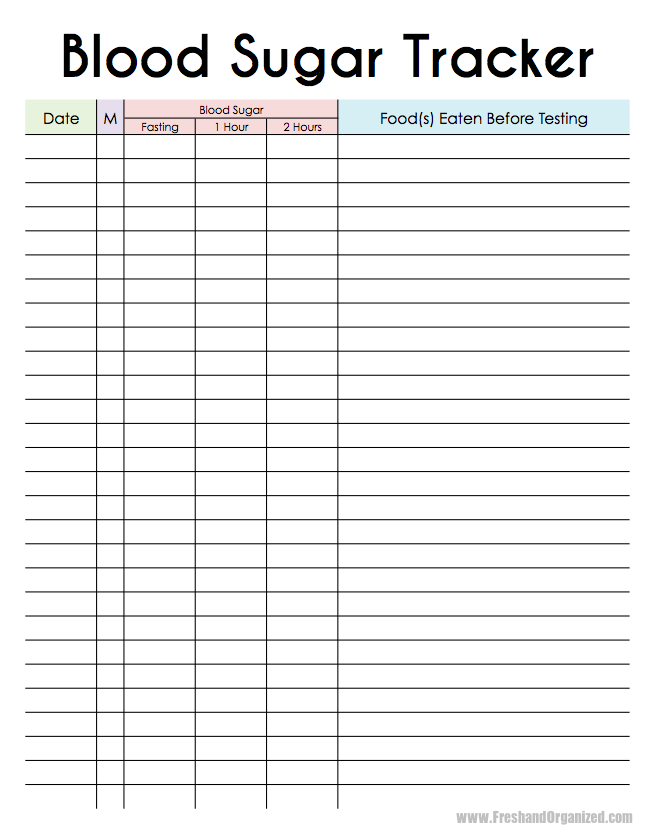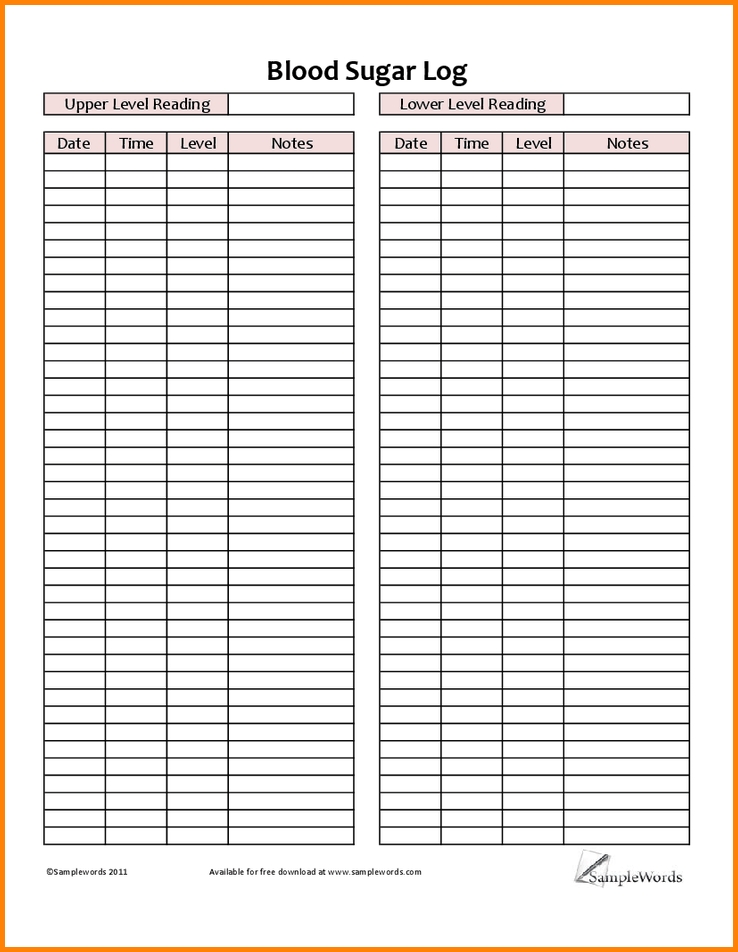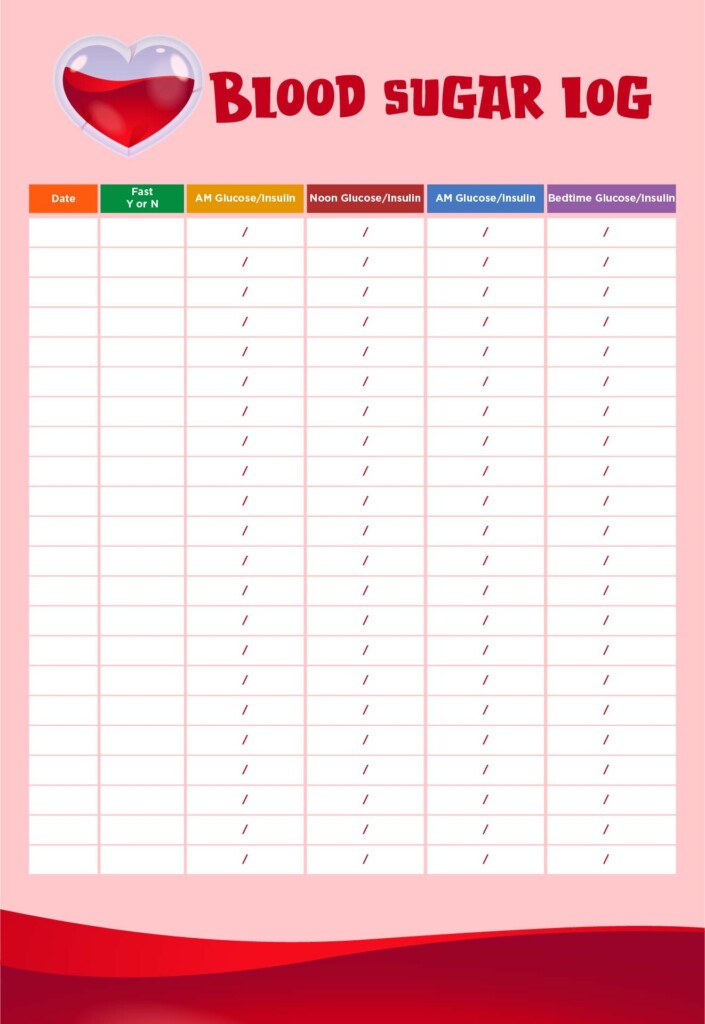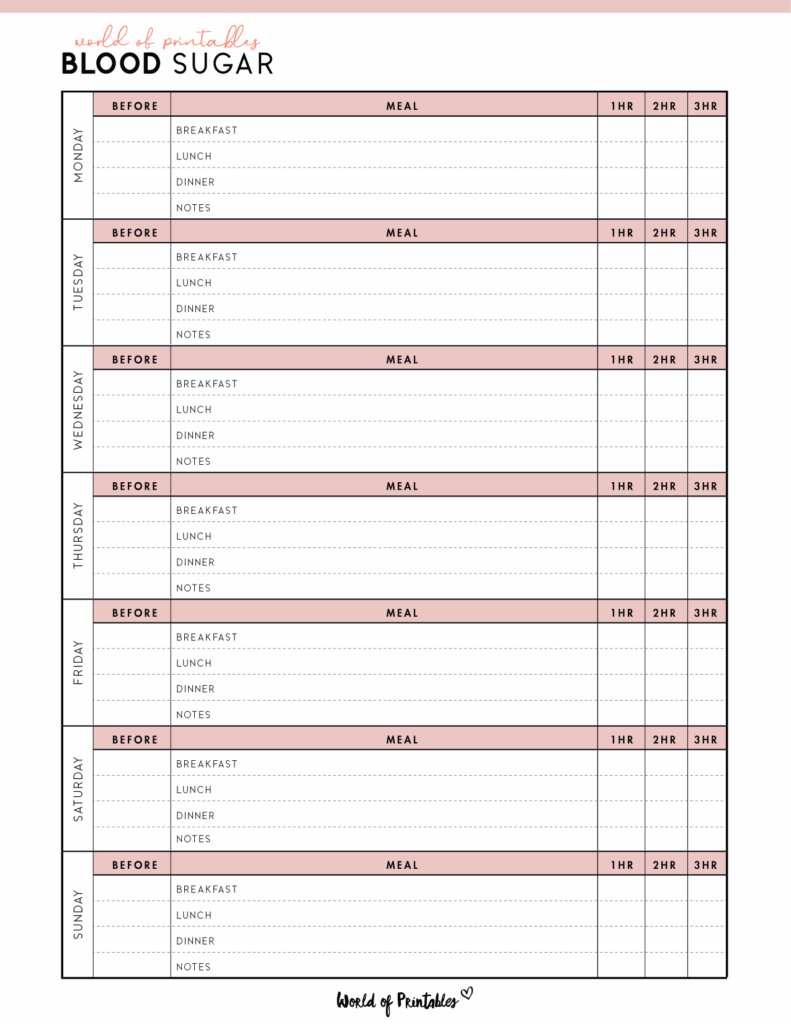Keeping track of your blood sugar levels is crucial for managing diabetes and overall health. A blood sugar log chart can help you monitor your levels and make informed decisions about your diet, exercise, and medication. When your blood sugar levels are too high or too low, it can lead to serious health complications. By regularly tracking your levels, you can identify patterns and make the necessary adjustments to keep your blood sugar levels in check.
It’s important to understand the different ranges of blood sugar levels. A normal fasting blood sugar level is typically between 70 and 100 mg/dL. Postprandial blood sugar levels, which are measured after eating, should be below 180 mg/dL. If your blood sugar levels consistently fall outside of these ranges, it may be a sign that you need to make changes to your diabetes management plan.
Using a Blood Sugar Log Chart
A blood sugar log chart is a simple tool that can help you track your blood sugar levels over time. You can record your levels before and after meals, as well as any other relevant information such as medication, exercise, and stress levels. By regularly updating your log chart, you can identify trends and patterns in your blood sugar levels and make adjustments to your diabetes management plan accordingly.
Having a printable blood sugar log chart can make it easier to keep track of your levels on the go. You can easily print out multiple copies of the chart and fill them out wherever you are. This can be especially helpful when visiting your healthcare provider, as you can bring along your log chart to discuss your progress and make any necessary changes to your treatment plan.
Monitoring Your Blood Sugar Levels
Regularly monitoring your blood sugar levels is essential for managing diabetes and preventing complications. By using a blood sugar log chart, you can track your levels over time and make informed decisions about your health. Remember to consult with your healthcare provider about how often you should be checking your blood sugar levels and what your target ranges should be. With consistent monitoring and proactive management, you can stay on top of your diabetes and lead a healthy, active life.




